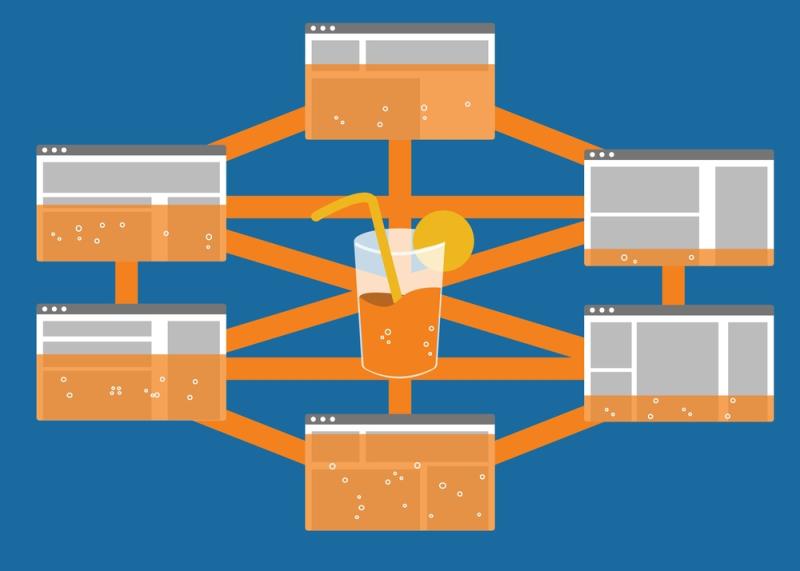Link juice: what it is and what it means to the SEO
Our daily article focuses on a basic topic of SEO, namely the concept of link juice or link equity. We know that backlinks are used by Google as a ranking signal, and according to some theories are just the main ranking factor on the search engine, but it is important to understand how to make the best use of the value that links convey throughout the site.
What is the link juice
The term link juice is used in SEO to define the value and authority that links transmit from one page or site to another page or site, which is also called equity, hence the name link equity. Search engines interpret links as a “vote” between sites, and therefore determine that the presence of backlinks to a page is a signal of quality content, valid and to be rewarded with a good ranking.
What link juice means
Link juice is an analogy with the physical mechanics of liquids: let’s imagine the website as a whole as an aqueduct that consists of various tanks – the pages – connected via pipes – the links. When pouring a liquid into a tank, the juice passes through all the connected tanks, obviously proportionally: in the SEO field, links to a page distribute to linked pages authority, value and equity – in a word, page rank.
How to exploit link equity in your SEO strategy
The concepts of link juice or link equity (theoretically, it is good to remember), and the resulting passage of page rank and link popularity, work both for internal links and for external backlinks, because the logic with which Google interprets the links does not change. For this reason, we have repeatedly stressed the importance of devoting great care to the management of this aspect and to avoid errors in the internal linking between the pages of our site, as well as of course it is essential to work strategically on the external link building.
Link juice and link building
Knowing the operation of the link juice is useful just for the backlink acquisition strategy and not to make link building mistakes: as mentioned, an input link distributes its weight cascading to all pages connected to the target one, and it is for this reason that it is often suggested to aim to get links to the home or categories of the site, which are the pillars on which the online project is based, on which depend the other pages that can benefit from the flow of this juice.
Examples of link juice
There is a classic example that is provided to explain the mechanism of the link juice, assuming you have two competitor sites, A and B. Equal to other factors of ranking and authority, the site A receives backlinks while the site B does not have: classically, this situation determines a better positioning on Google for the first site at the expense of the other, benefiting from the trust provided by the linking sites.
But what if B also receives input links? The consequences depend on the quantity and quality of the juice transmitted by the links: in the image taken from woorank, A receives links from four sites and B from two, and in turn the linking sites benefit from other juice derived from other domains.
How the transfer of trust and equity works
The greater number of A links could determine its best ranking in search results. But if we consider instead that the sites that link to A also have other outgoing links (and therefore disperse their juice), while those that link to B have none, then the second site can take advantage of a greater load of link juice and thus have more chances to rank higher on Google than the competitor.
It is worth reiterating that these concepts are theoretical and not confirmed by Google, based on SEO theories matured over the years; based on these assessments, however, a page that starts many links reduces the flow rate and transmits less equity to the target pages.
Internal links, nofollow and link Sculpting
In the past, in order to avoid dispersing the juice of links, a manipulative technique known as link sculpting (or pagerank sculpting) was used, namely the use of the nofollow attribute for links between pages of the same site or external backlinks, so to give more strength to priority links (which remained in follow). In practice, the juice of the nofollow link was redistributed to the other links set in dofollow.
Subsequent Google updates have made this strategy obsolete: according to the latest interpretations the link juice is calculated considering all the links (both follow and nofollow). In the case of nofollow tags for a link no longer changes the percentage of equity transmitted to pages by other links, but only the part related to this specific link is reset.
Photo Credits: Flickr




